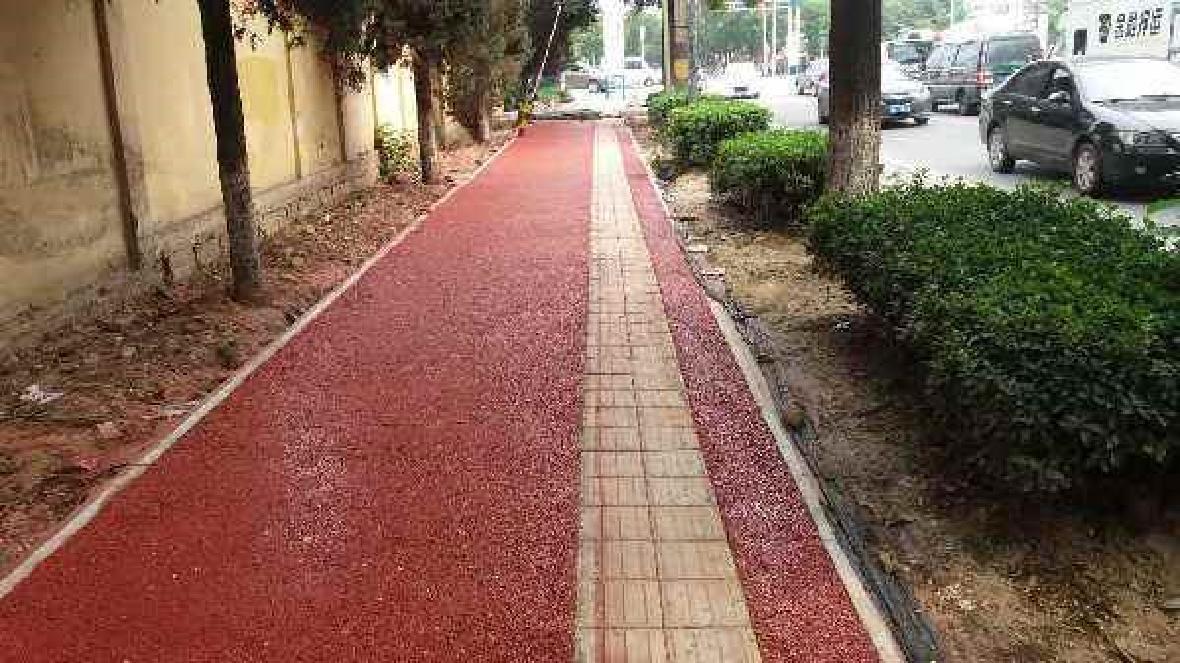08
2019
-
01
Sponge City Construction and Geosynthetics (4): Geosynthetics in Permeable Pavement
Author:
I. Introduction
Pervious pavement system, as one of the concrete measures under the concept of "sponge city", has reconstructed the benign cycle of "rainfall-runoff-infiltration-reuse/recycle" destroyed by hardened ground. It is known as "breathing" ground pavement, which has good ecological benefits and is of great significance to the restoration of urban water environment and the realization of rainwater resource utilization. At present, pervious pavement system has been widely used in parks, parking lots, sidewalks, squares, light-duty roads and other fields. Geosynthetics is an important part of pervious pavement system. In view of the measures of "seepage and stagnation", geosynthetics should be able to play the functions of infiltration and filtration, ensure the effective infiltration of rainwater into the soil and minimize the amount of rainfall discharged into the pipeline system. In view of the measures of "storage and purification", geosynthetics should be able to play the functions of water storage and water purification, and ensure the rainwater energy as far as possible. Enough effective retention, combined with sand and gravel to purify water quality, can effectively store rainwater. In view of the "use and drainage" measures, geosynthetics can ensure smooth drainage, good hydraulic conditions and filter conditions, ensure that it is not easy to silt up, and achieve the goal of comprehensive utilization of rainwater.
II. Structure of Pervious Pavement System

Permeable pavement
The structure of pervious pavement system from top to bottom is surface layer, base layer, subbase layer and soil layer. According to the different surface materials, it can be divided into permeable brick pavement, permeable cement concrete pavement and permeable asphalt concrete pavement. Grass-embedded brick, pebble and gravel pavement in garden pavement also belong to permeable pavement. In pervious pavement, the functions of isolation, drainage, filtration and seepage prevention of geosynthetics can be fully utilized to ensure that pervious pavement can serve "sponge city" safely and effectively.
3. Geosynthetics and their functions in pervious pavement system
(1) Isolation
In light-load road engineering, geotextiles are placed between the base and the soil layer, so as to avoid the intermixing of coarse and fine soil materials and ensure the design thickness and overall function of the coarse permeable layer. At the same time, laying geotextiles between the soil layer and the subbase can block the capillary water migration channel to prevent frost heave and other phenomena of the foundation and maintain structural stability.
(2) Seepage control
In pervious pavement system, when the permeability of land is limited, drainage pipes or drainage boards should be installed in the pervious base of pervious pavement. Between perforated drain pipe and gravel layer, it is necessary to consider wrapping anti-seepage geosynthetics to prevent fine particles from entering drain pipe during rainwater seepage. At the same time, wrapping anti-seepage geosynthetics should also be considered in gravel layer and soil base to ensure the long-term use of perforated drainage pipes without silting up. At present, in the construction of sponge city, the silt prevention measures of perforated drainage pipes are often neglected and should be corrected in design. In some buildings and residential roads, when the rainy season comes, a large number of rainwater seepage may cause seepage deformation in the permeable pavement system, causing damage to surrounding buildings or structures. Therefore, geosynthetics are also needed in the base and subbase and soil layers to prevent seepage from causing seepage deformation.
(3) Function of filtration and drainage
In rainwater season, due to the increase of rainfall, the permeable pavement system has a large amount of permeable water, which leads to insufficient soil permeability. Rainwater is in the grass-roots for a long time, which may lead to the destruction of the permeable pavement system. At this time, it is necessary to set up drainage materials or drainage systems at the base level and the base level, collect seepage in the base level, and discharge it out of the body smoothly through drainage materials. At the same time, geosynthetics are arranged at the base level, and the water flow through the geosynthetics is retained by using the characteristics of geosynthetics filter.
(4) Reinforcement
In some special geological cities, the construction of "sponge city" requires permeable pavement not only to meet the virtuous cycle of "rainfall-runoff-infiltration-reuse/recycling", but also to meet the requirements of foundation bearing capacity. Geosynthetics placed in the base or soil layer can improve the strength of the soil and the deformation performance of the soil. The combination of Geogrid and soil can meet both the requirements of runoff seepage and strength deformation.
Today, the construction of sponge city is being promoted in an all-round way. Pervious pavement system can be integrated with the practice of building a wise city. Through on-line real-time monitoring and early warning of rainstorm and seepage pavement system, rapid response can be made to control surface runoff. Combining the infrastructures of pervious pavement system with information technology means such as big data and cloud computing to realize the intelligent regulation of rainwater and the recycling of urban rainwater, so as to achieve the function of intelligent "sponge city", is one of the important measures to realize the construction of sponge city. Geosynthetic materials play an important role in it and will also have broad application space.
Teandersheng Synthetix Materials Co., Ltd. welcomes your call to consult geosynthetics geogrid, geotextile, geomembrane, tunnel waterproof board, EVA waterproof board, plastic drainage board and other geotechnical materials.
undefined




